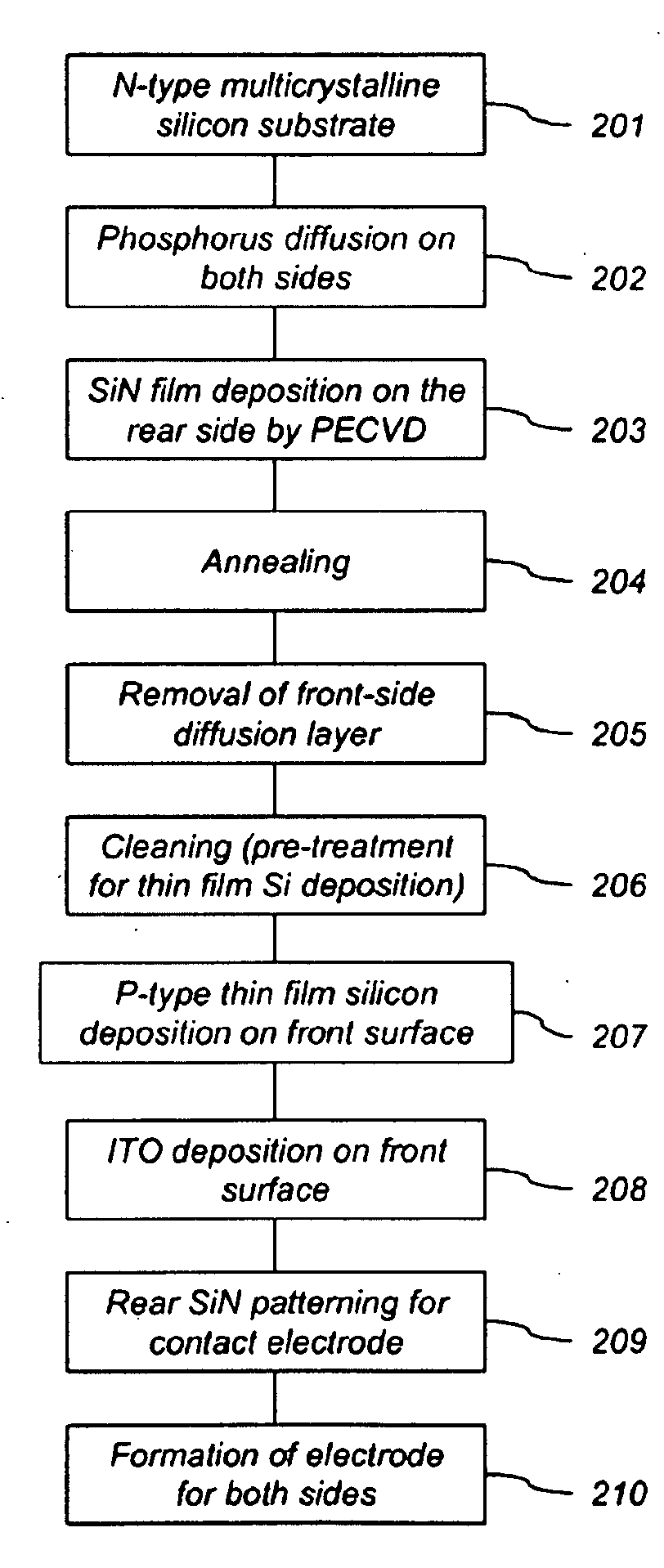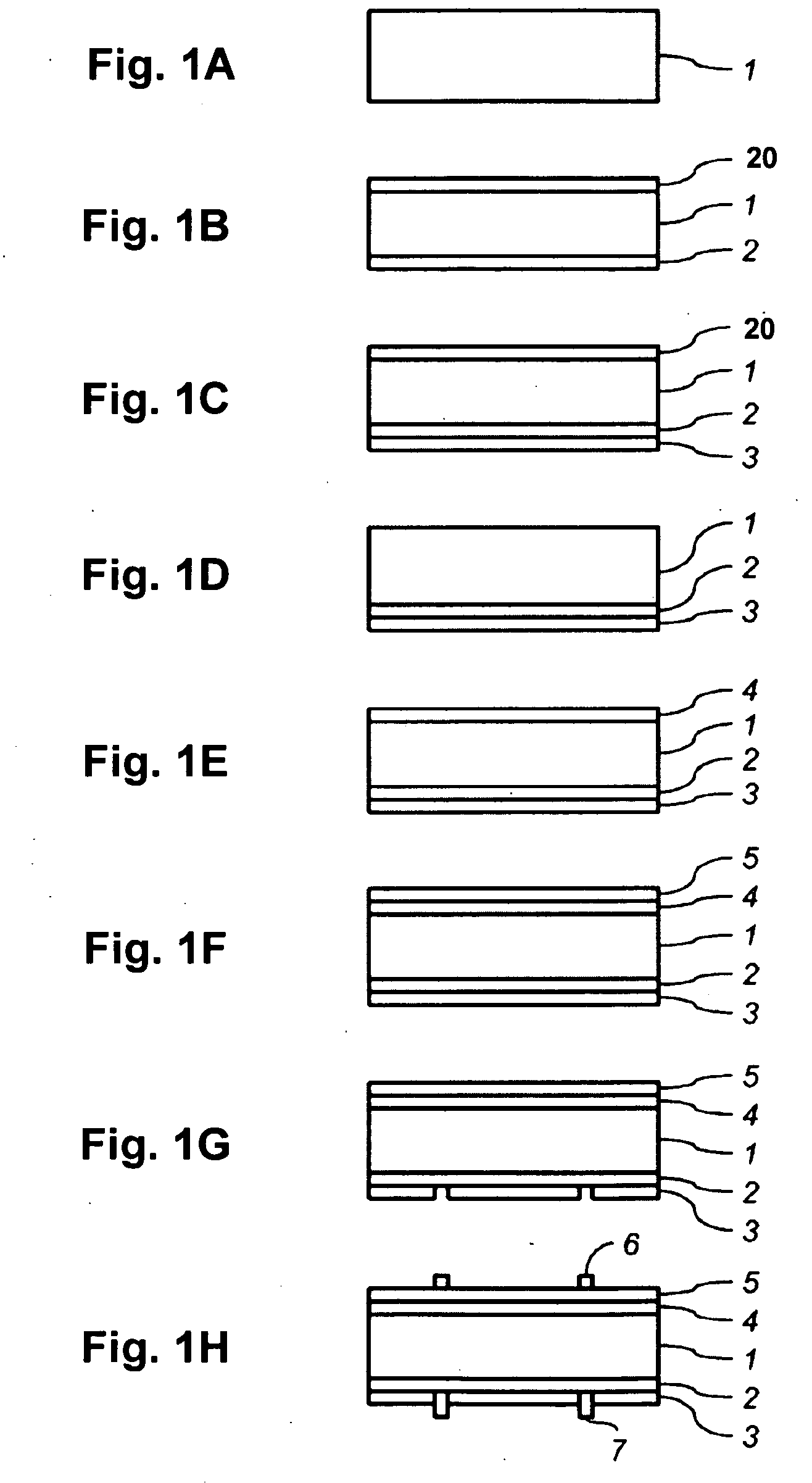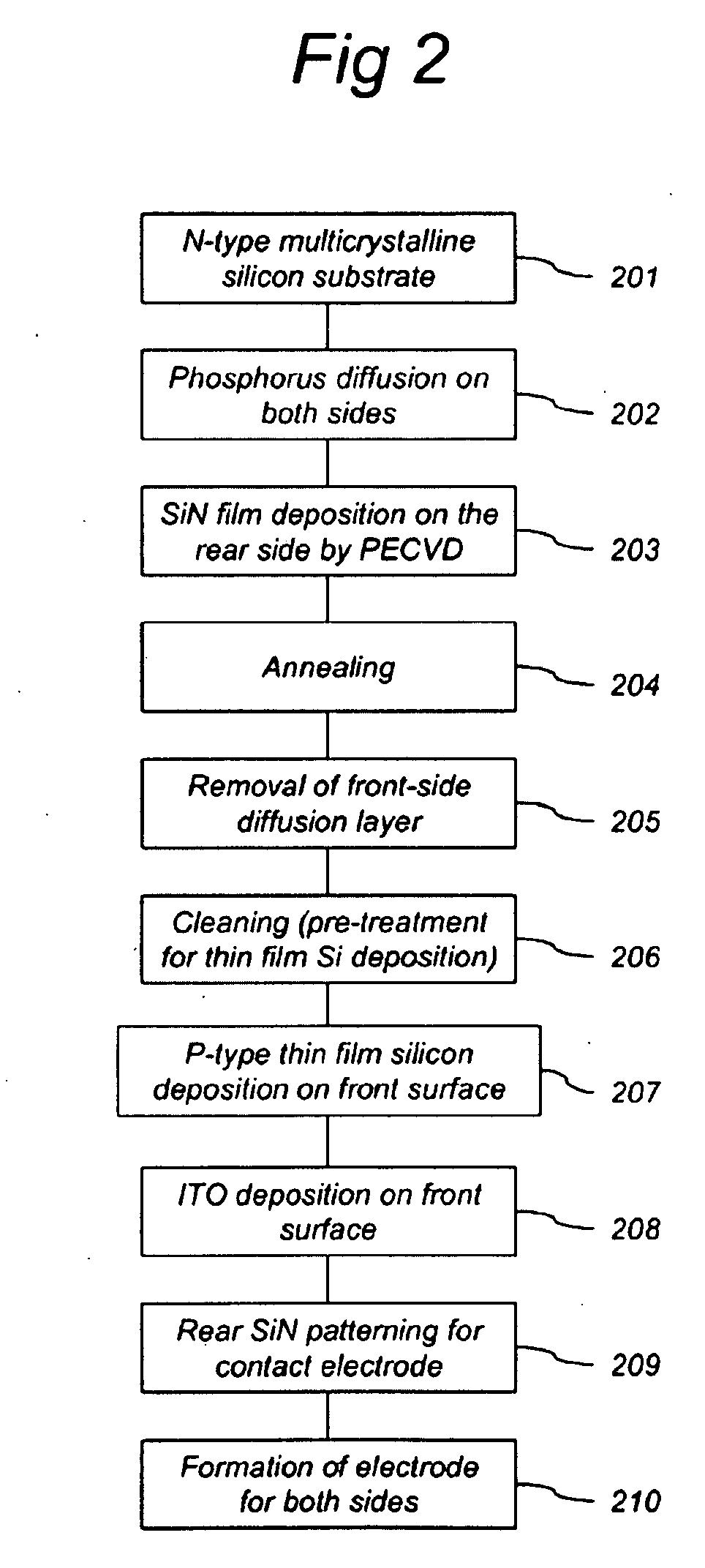Method of Manufacturing N-Type Multicrystalline Silicon Solar Cells
a multi-crystalline silicon and solar cell technology, applied in the field of solar cell manufacturing, can solve the problems of inability to maintain the quality of the thin film layer deposited on the substrate, no proper solution for integrating these two processes, and achieve the effect of increasing the current of the solar cell
- Summary
- Abstract
- Description
- Claims
- Application Information
AI Technical Summary
Benefits of technology
Problems solved by technology
Method used
Image
Examples
examples
[0032]Below, a further explanation of the invention is made using some other practical examples.
[0033]In a laboratory, 240 wafers with a thickness between 200-240 μm comprising a n-type mc-Si substrate with a resistivity of 0.5-3 ohm·cm were prepared. These wafers were sliced out from one square column with the size (width and depth) of 125×125 mm2, which was cut out from one casted ingot. The wafers were numbered #1 to #240 according to the position in the original ingot. They were divided into six groups wherein every sixth wafer was placed in a specific group. Each group had 40 wafers. Hereafter, the groups are referred to as group B, group C, group D, group E, group F, group G wherein:
Group B: #1, #7, #13, #235
Group C: #2, #8, #14, . . . , #236
Group D: #3, #9, #15, . . . , #237
Group E: #4, #10, #16, . . . , #238
Group F: #5, #11, #17, . . . , #239
Group G: #6, #12, #18, . . . , #240.
Example
Group B
[0034]Group B is a typical example of the invention. The solar cells structure shown ...
example
Results
[0042]The current-voltage characteristics of the completed cells were measured with a procedure described in IEC 60904. Table I shows the average values of the cell properties of each group, wherein Jsc is the short circuit current, Voc is the open circuit voltage and FF is the Fill Factor.
TABLE IHydrogenin SiNAnneal SiNJscVocEfficiencyGroupRemark[atomic %][° C.][mA / cm2][mV]FF [%][%]BTypical example7650-75032.661377.215.4CConventional HIT——29.659577.413.6DWithout back SiN——30.560577.114.2ELow H content SiN850-90031.860877.114.9FHigh H content SiN22650-75031.760877.214.9GWithout anneal SiN9—31.460777.214.7
[0043]When comparing group D with group C, it shows that the short circuit current Jsc and the open circuit voltage Voc are improved. This is most certainly due to the presence of the back side phosphorus-doped layer 2. Because of the phosphorus diffusion process, see step 202 of FIG. 2, iron contamination present in the casted wafers is gettered by diffused phosphorus atoms ...
PUM
 Login to View More
Login to View More Abstract
Description
Claims
Application Information
 Login to View More
Login to View More - R&D
- Intellectual Property
- Life Sciences
- Materials
- Tech Scout
- Unparalleled Data Quality
- Higher Quality Content
- 60% Fewer Hallucinations
Browse by: Latest US Patents, China's latest patents, Technical Efficacy Thesaurus, Application Domain, Technology Topic, Popular Technical Reports.
© 2025 PatSnap. All rights reserved.Legal|Privacy policy|Modern Slavery Act Transparency Statement|Sitemap|About US| Contact US: help@patsnap.com



